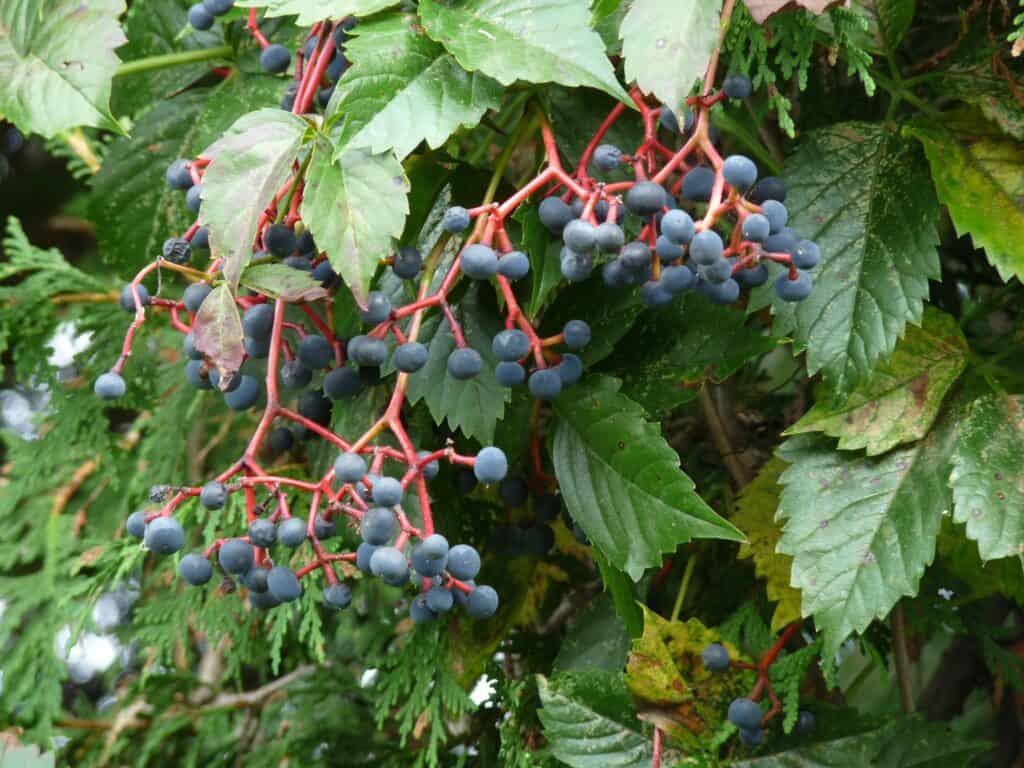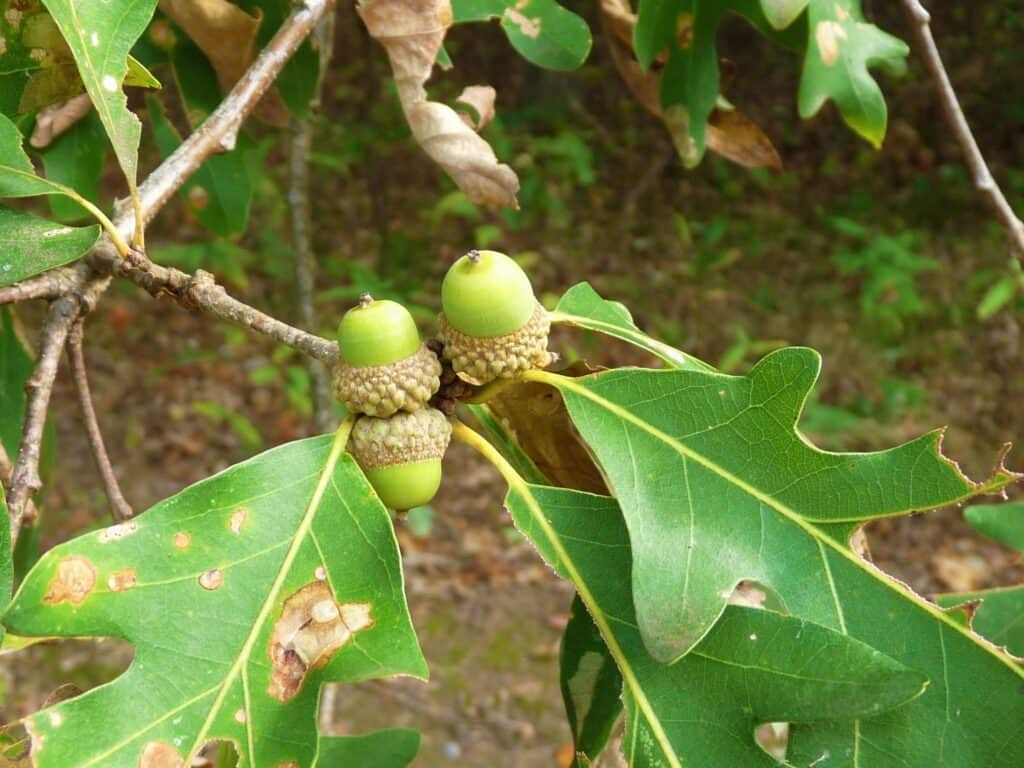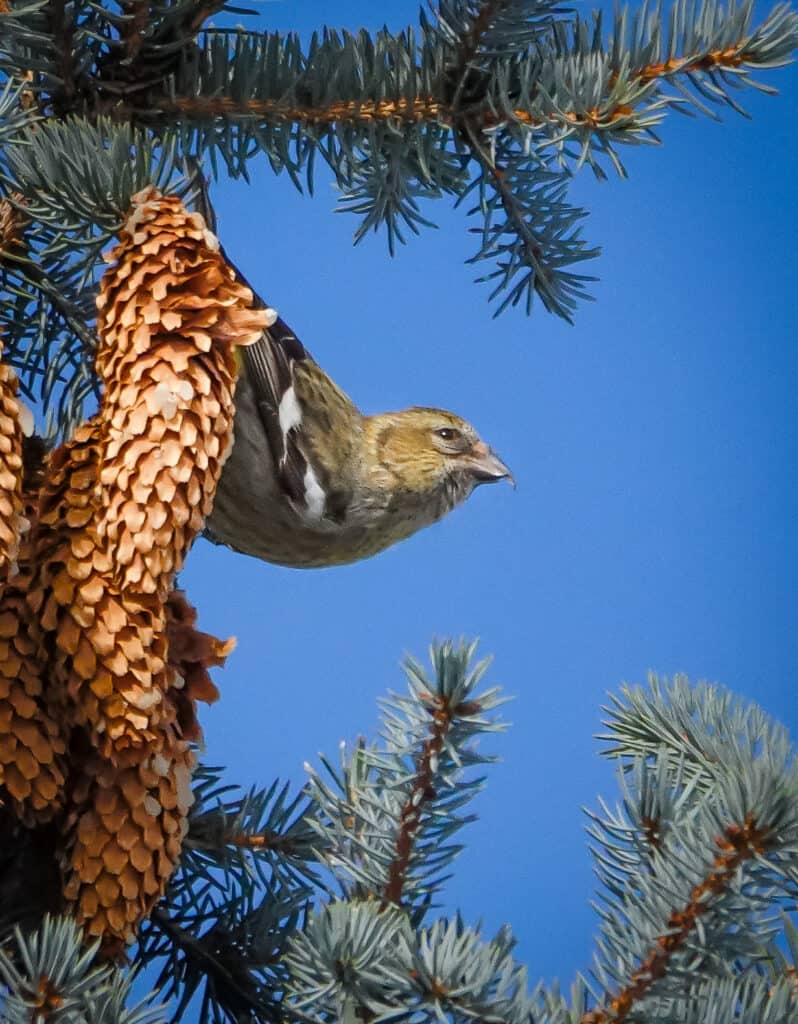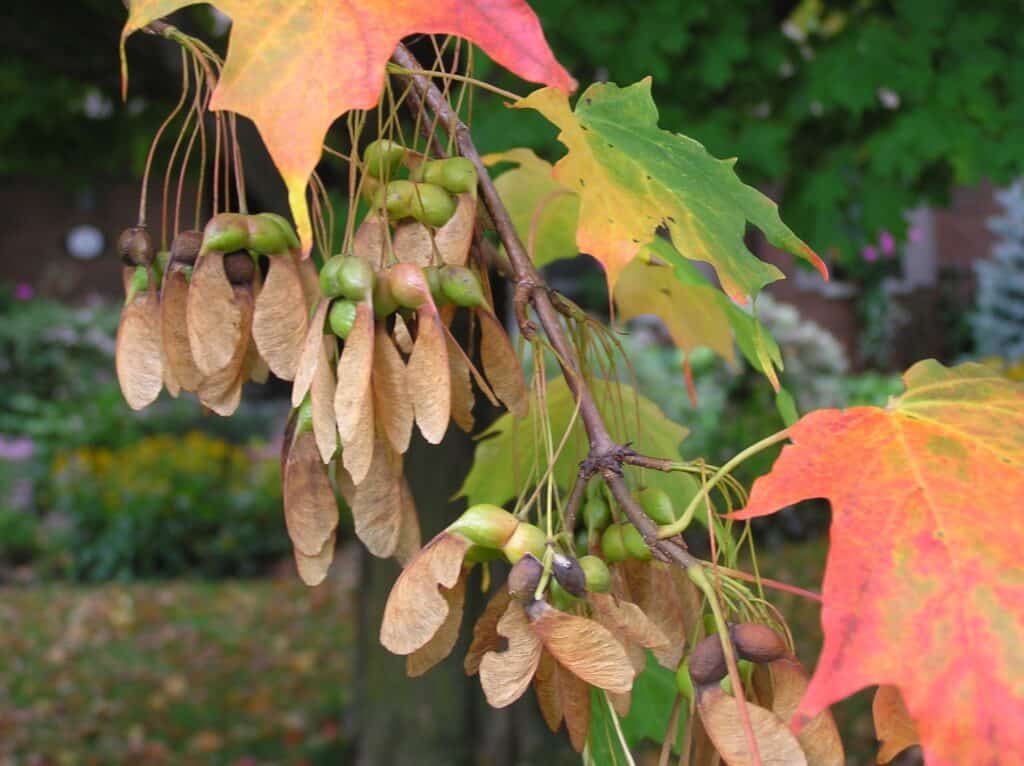Peterborough Examiner – September 24, 2021 – by Drew Monkman
A boom or bust cycle of seed production is no less than an adaptation for survival
“Daddy, why do flowers smell nice? Why do ladybugs have spots?” From the time we’re old enough to talk, we overwhelm our parents with “why” questions. Clearly, the answer to a why question is deeply satisfying and seems to fulfill a profound human need to make sense of the world. Thanks to Charles Darwin, we can now expect to get an evidence-based answer to most any why question. Before Darwin, the response was simply: “That’s the way God made things. End of story.”
There is a wonderful why question that many readers may be asking right now. Why are there so many seeds on the trees, shrubs, and vines this year? Everything from massive black walnut trees to diminutive Virginia creeper vines are laden with a gargantuan load of seed, fruit, and cones. Not surprisingly, this abundance is an adaptation for survival. It assures that plant genes are successfully transferred to a new generation. Millions of years of evolution have fine-tuned plants as much as animals to survive in a rough and tumble world.

The example of oaks
Everyone is familiar with the curious, tam-o’-shantered acorns that fall from oaks with a heavy thud. Unlike the seeds of grasses or wildflowers, acorns – and the seeds of most woody plants in general – come packed with a self-contained food supply. This allows the seed to grow and get a start in life even when conditions are less than optimal. There is, however, a price to be paid for such a nutritious store of food. It invites herbivores. Deer, squirrels, chipmunks, mice, blue jays, turkeys, and even some ducks and woodpeckers all dine heavily on acorns. They are also parasitized by a host of insects. So, to assure that at least some seeds survive, a clever adaptation has evolved.

For several years in a row, oaks will produce next to no acorns. This has the effect of greatly reducing the number of seed-eating animals. Many will die or simply have fewer young. Then, with the herbivore population knocked down a few notches, something amazing happens: the trees suddenly produce a giant acorn crop. Those herbivores that are still around quickly become satiated. In this way, a significant number of acorns – or any other type of seed – will survive to grow into seedlings.
The result of this “pulsing” of seed production is that young oaks growing in the vicinity of parent trees are all the same age. Clearly, a parent tree doesn’t need to make new seeds every year, because the young trees it has already produced still lay waiting for their turn to get enough sun and other resources to have a chance to grow to maturity.
The science of masting
In this boom or bust cycle of seed production, the manufacture of prodigious quantities of seeds, be they in the form of nuts, berries, acorns, or keys is known as masting. Mast is a noun of Anglo-Saxon origin that refers to the accumulation of acorns, beech nuts, and other kinds of nuts on the forest floor. In earlier times, mast would serve as food for hogs and other farm animals, so it was something people paid attention to.
Trees of a given species will often have a mast year at the same time and over a large geographic area. An 11-year study in California of acorn production in blue oaks found that masting occurred in nearly every one of over 100 million trees, some as far as 700 kilometres apart. The obvious question is how do trees coordinate the same cycle of seed production over such huge distances?
The exact mechanisms are still unclear. Some researchers believe that trees may have “biological clocks” that are somehow synchronized to mast at opportune times. Trees must also save up enough energy and resources. It typically takes three to four years for an oak tree to mast. It may also be that environmental cues such as wide-ranging climate conditions trigger the phenomenon. Not surprisingly, temperature may be the key factor, especially in April and May when trees generate the male and female flowers that will, in turn, produce seeds. This past spring, trees such as sugar maples were literally covered in flowers.
Optimal spring temperatures extending over a large geographic area would conceivably allow for trees in that same area to all benefit from excellent levels of pollination and therefore produce a massive amount of seed. In the case of red oaks, however, this would have to occur the year before masting, because red oak acorns take 18 months to mature. The periodic fluctuations of temperatures may themselves be caused by cyclic phenomenon such as the El Nino effect in the Pacific Ocean. It is not known at this time how on-going global heating will impact masting.
Ecological impacts
Masting has important ecological effects, too, as the food chain becomes distorted by so much food available. For example, a masting year in conifers allows seed-eating birds such as crossbills to lay more eggs than usual and to raise more young. However, in a low food year following masting, the larger than usual number of these same birds must migrate elsewhere to avoid starving. This helps to explain why so many redpolls and pine grosbeaks descended upon the Kawarthas last winter. Food was lacking further north. In the case of maples, masting can lead to a rapid expansion in the number of seed-eating mice. Given this year’s abundance of maple keys, I suspect mice populations are flourishing.
Who would have thought that the presence or absence of masting could have such wide-ranging effects as the number of birds at our feeders? Nature never does just one thing. Whatever phenomenon we’re seeing, you can be sure that it is connected to a hose of other events and consequences, many of which are unpredictable. All of us who enjoy nature need to remember to always wonder “why?” such and such a phenomenon is happening. There is usually an answer. It just requires a bit of research. This is one more reason why paying attention to nature is so satisfying.
CLIMATE CHAOS UPDATE
In only 37 days, COP26 will begin in Glasgow. This climate summit of the world’s nations may be the last opportunity to coordinate the drastic mitigation measures that humanity’s future requires.
ALARM: A recent article from the David Suzuki Foundation at https://tinyurl.com/4fvjv5c2 explains how climate-altering negligence is endangering the world’s children. Most people try to keep their children and grandchildren safe and wouldn’t knowingly put them at risk. Maybe that’s why some ignore or downplay the climate crisis. It’s easier than admitting that, by our actions, we’re condemning those we love to an increasingly uncertain future. A new UNICEF report and “Children’s Climate Risk Index” show that almost half the world’s children — one billion — live in countries where they face “extremely high risk” from climate chaos and other environmental havoc.
HOPE: On September 7, Climateaction.org reported that Amazon and The Nature Conservancy have launched the “Agroforestry and Restoration Accelerator.” The initiative will focus on reforestation and regenerative agroforestry in the Amazon rainforest, removing up to 10 million metric tonnes of carbon dioxide emissions through 2050. The initial investment will support 3,000 farmers and restore approximately 20,000 hectares within three years. See https://tinyurl.com/3ybvpmke
ACTION: To see ways YOU can take climate action, go to https://forourgrandchildren.ca/. Click on “This Month’s Action” or “Find Another Action for Today”.

